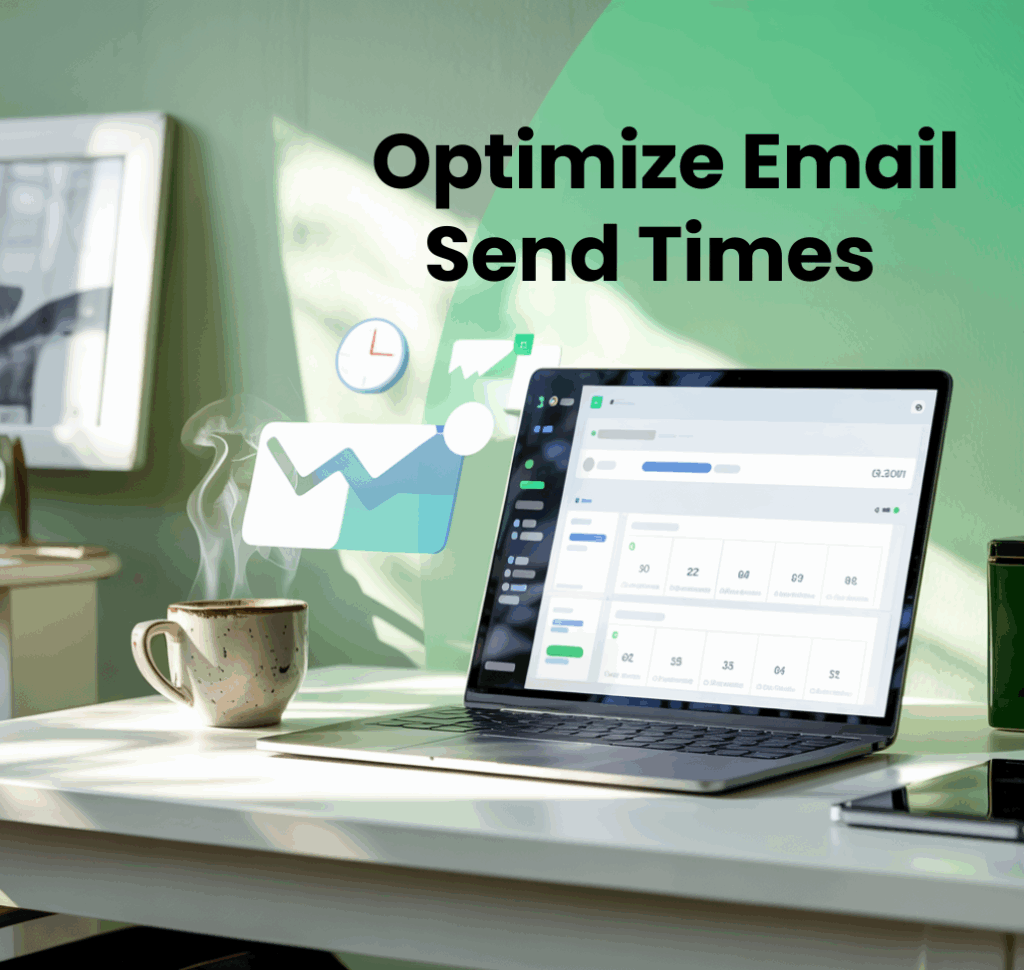In the fast-paced world of small business marketing, every email is a chance to drive engagement, increase sales, or deepen customer loyalty. But here’s what most small business owners overlook: the best time to send marketing emails plays a huge role in whether your message is opened or ignored.
At W.A.M. Strategies, we go beyond “just hitting send”—we use data-driven strategies to help you send smarter, not just more often. In this blog, you’ll learn:
- Why timing matters in email marketing
- How to test and find your audience’s ideal send time
- Pro email marketing tips to maximize open rates and conversions
- Real-world results from small business campaigns
- How to start improving your own campaigns today
Let’s dive into the power of timing in email marketing—and how small businesses can use it to their advantage.
Why Finding the Best Time to Send Marketing Emails Matters for Small Businesses
For small businesses working with limited resources, every message counts. The difference between an open and a skip could mean the loss of a sale, referral, or loyal customer.
Benefits of Perfect Timing:
- More Eyes on Your Message – People are more likely to open your email when it arrives during their active inbox hours.
- Stronger Engagement Rates – Emails timed well see higher click-through rates (CTR), website visits, and replies.
- Better Sales Conversions – A well-timed promotion catches people when they’re most ready to buy.
- Higher Deliverability – Email providers may boost your sender reputation when your engagement improves.
Fact: Studies show emails sent between 10:00 AM – 11:30 AM on Tuesdays or Thursdays often perform best for B2B audiences, while evenings and weekends can work better for B2C businesses. However, the “best time” can vary drastically—your audience is unique, and the only way to know for sure is to test.
Features & Benefits of Timing Optimization
Implementing a strategic email send time plan offers several advantages:
| Feature | Benefit |
| A/B Testing | Identify which timing window gives you the best open and click rates |
| Time-Zone Targeting | Send emails to recipients at the right local time, not just a blanket blast |
| Predictive Scheduling Tools | Use AI-powered insights to schedule for the best engagement |
| Behavior-Based Timing | Send follow-ups or reminders based on how and when users engage |
| Automated Send-Time Optimization | Tools like Mailchimp, ActiveCampaign, and Klaviyo offer auto-optimized timing features |
Advanced Email Marketing Timing Tips (You Need to Know)
Here are five pro tips that go beyond the basics and will help your campaigns stand out in crowded inboxes:
1. Run Send-Time A/B Tests Regularly
Don’t assume your audience behaves like others. Test variations—morning vs. evening, weekday vs. weekend—and compare performance.
💡Pro Tip: Only change one variable at a time when testing timing. Keep the subject line and content identical to isolate the impact of time.
2. Consider Time Zones and Regional Behavior
If you’re emailing across the U.S., you must respect regional differences. An 8 AM Eastern Time email hits West Coast inboxes at 5 AM—too early to be seen.
Use platforms that allow time zone segmentation so emails are delivered at local times.
3. Use Behavioral Send Triggers
Track how individuals engage, then build email automation around that.
Example: If a user clicks your product page at 9 PM, schedule future follow-ups around that same time.
Tools like HubSpot, Klaviyo, and ActiveCampaign offer this type of user behavior tracking.
4. Match Timing to Campaign Goals
- For event invites, send at the start of the workday or 48 hours in advance.
- For flash sales, hit inboxes during peak mobile browsing hours—often in the evening.
- For newsletters, midweek mornings tend to perform best.
The intent of the email should guide its timing—don’t default to one-size-fits-all.
5. Resend to Non-Openers (at a Better Time)
Resending emails to those who didn’t open—at a different time—can give you a second chance.
💡Pro Tip: Wait 48-72 hours and change the subject line slightly for the resend.
Step-by-Step Guide to Finding Your Optimal Send Time
- Analyze Your Audience: Understand your target demographic’s habits and preferences.
- Conduct A/B Testing: Experiment with different send times to determine when your audience is most responsive.
- Monitor Metrics: Track open rates, click-through rates, and conversions to assess the effectiveness of your timing.
- Refine Strategy: Use the data collected to adjust and optimize your future email campaigns.
For example, B2B audiences often engage more with emails sent on weekdays during business hours, while B2C audiences may respond better to emails sent during evenings or weekends .
Case Study: Boosting Engagement Through Timing Optimization
A local retail business partnered with W.A.M. Strategies to enhance their email marketing efforts. By analyzing their audience’s behavior and adjusting their email send times accordingly, they achieved:
- 35% Increase in Open Rates: Strategic timing led to more emails being opened.
- 25% Boost in Click-Through Rates: Emails sent at optimal times resulted in more interactions.
- 20% Growth in Sales: Improved engagement translated to higher conversions and sales.
Pro Tips for Effective Email Timing
- Segment Your Audience: Tailor send times based on customer segments for more personalized engagement.
- Consider Time Zones: Ensure emails are sent at appropriate times for recipients in different time zones.
- Avoid Mondays: Studies indicate that Mondays often have lower open rates due to inbox overload .
- Leverage Automation: Use email marketing tools to schedule emails at optimal times, ensuring consistency and efficiency.
Optimizing your email send times is a powerful strategy to increase engagement and drive business growth. At W.A.M. Strategies, we specialize in creating tailored email and find the best time to send marketing emails.
Ready to optimize your email marketing strategy? Contact us today to schedule a consultation and start sending smarter emails that get noticed.

